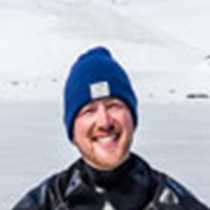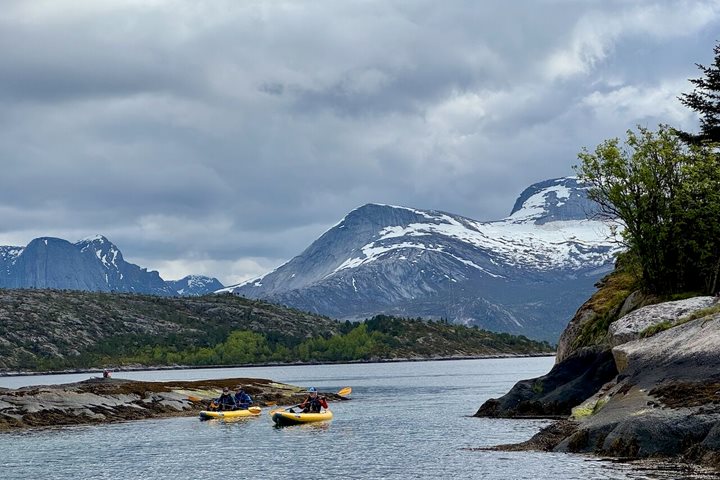After a hard earned night, National Geographic Orion continued to head north into the cold embrace of the Barents Sea. In truth, there were two parts to our trip. The first being a joyful and fair weathered exploration of the Norwegian Coast. The second, and the goal—the Svalbard archipelago. Through the mist of the morning, land came in site. As land ho was called, some still debated whether or not it was the clouds playing tricks, but soon it was undeniable that we had arrived. This was not simply another Arctic jaunt, this was National Geographic Orion’s first time in Arctic waters, spurning the curiosity of all onboard.
Russebukta was our first destination. Found on the Edgeoya Island, a flat bogged plain awaited feet hungry for land after two days at sea. Hikers took off in all directions to search the tundra. Some finding reindeer feeding on the short grasses of summer. While others steadied their eyes upon a walrus skull, gaining a sense for just how large the creatures are in full. Discarded antlers lay all about with minute algal growth filling in their pores, while the spongey earth beneath our feet seemed to bounce us right along.
As always, the evening started with a recap full of local legends and photography insights, but it was when everyone was seated that the plot thickened more than the entrée’s sauce. The ship began to turn with great purpose, a sure sign that something had been sighted. Some who had traveled with us before needed no announcement, tossing aside their napkins to hurry to their cabins and grab all that they had packed in preparation for the moment when our first polar bear was found. On a hill side patched with green moss, the white bear lurked. With the occasional curious sniff, we watched it gather information, letting the wind be the messenger. Digging into the tundra, it searched for any opportunity that could turn into a meal. It was a distant, but welcome arrival to a far off land. A series of islands and ice that hold much promise for the days to come.







